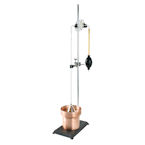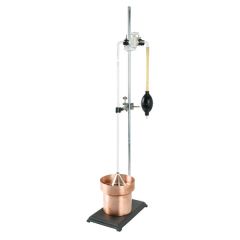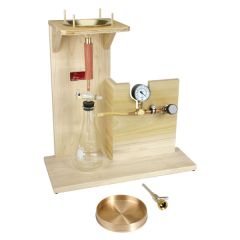Bleed and Water Retention

Bleeding is the process in which water in the cement mix “bleeds” upward through the cement as a result of heavy particles sinking or settling. A certain level of bleed is tolerable (and, in some cases, desirable), but if your cement bleeds too much, it can adversely affect the material’s durability. Usually, excess bleeding is a product of an unbalanced ratio of cement to water. However, there are some other potential causes as well, such as not using enough fine aggregates in the cement mix, and the pressure and height of the cement can also be contributing factors.
To determine the bleed level in a cement mix, you can use a cement bleeding apparatus like the one sold by Forney. This device can analyze the rate and capacity of bleeding in cement paste and mortar. The unit comes with a non-corrosive metal container to hold your mortar, along with a collection ring, a support stand, a funnel assembly, a stopcock, and burette clamps.
Forney also offers a device for conducting water retention tests. Our water retention device can be used for specification tests of masonry cement, along with the physical testing of hydrated lime and quicklime substances. Each apparatus includes an extensive collection of accessories: an aspirator pump, a vacuum regulator, a vacuum gauge, a three-way stopcock, a flask, a rubber gasket, a brass funnel, a perforated brass dish, filter paper, and a sturdy hardwood stand.
Whether you’re looking for a cement bleeding apparatus or a water retention test device, Forney has you covered!
-
- Water Retention Device
SKU: LA-4150
Water Retention Device is used in specification tests of masonry cement and physical testing of quicklime and hydrated lime.



